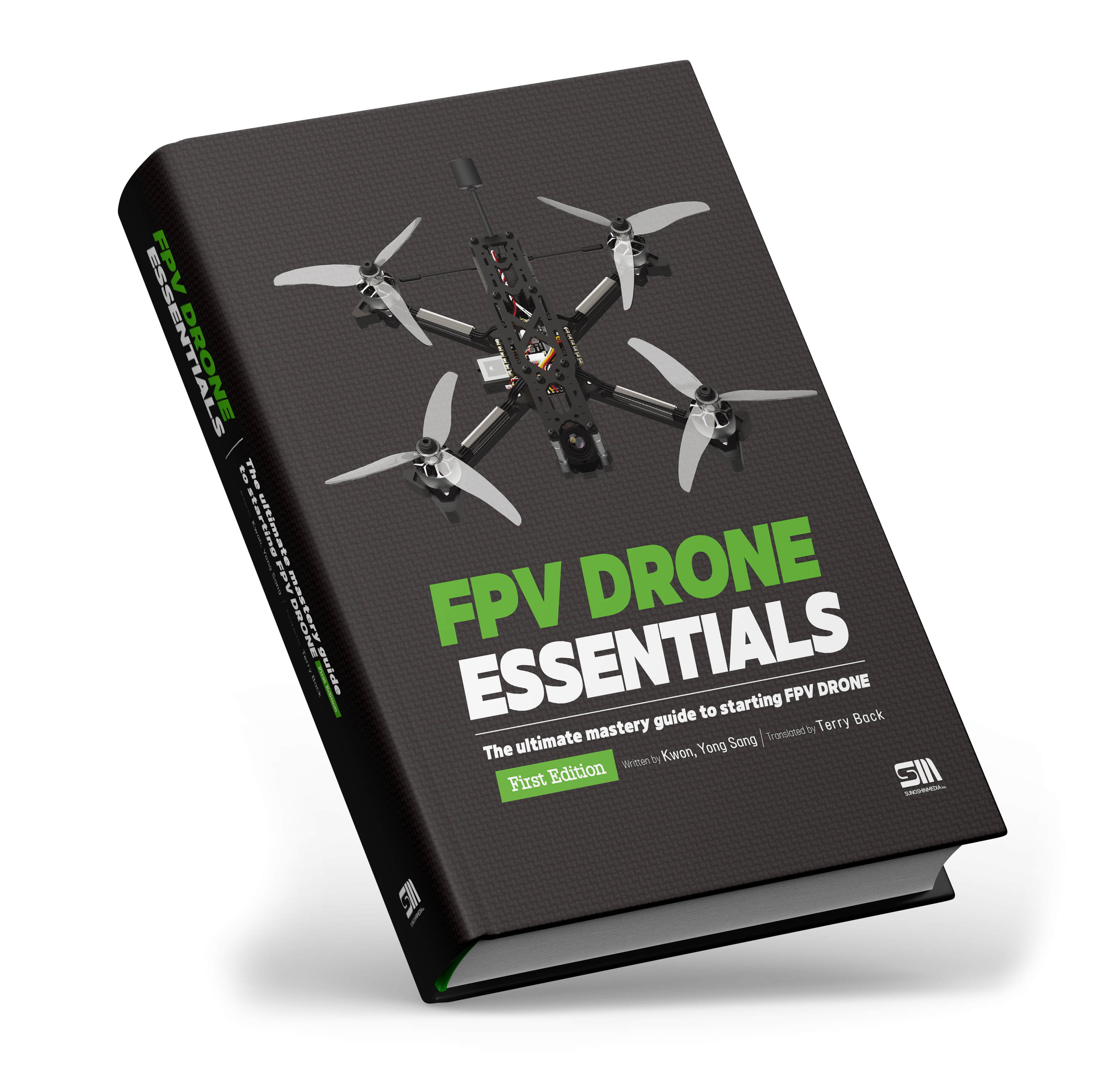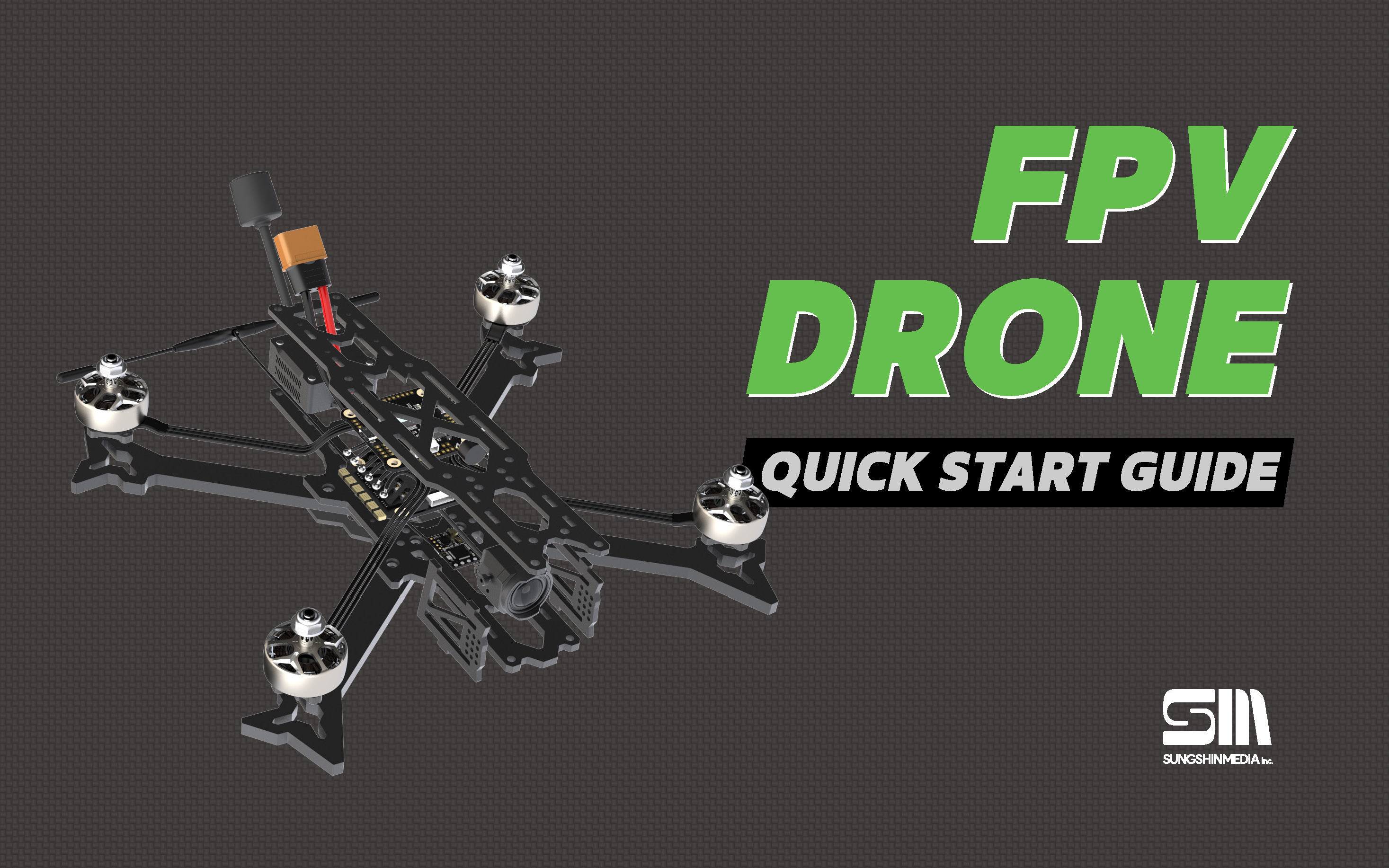STEP1. Understanding Drone Components & Equipment

FPV drones consist of key components: Frame, Flight Controller (FC), Electronic Speed Controllers (ESC), Motors, Propellers, Radio Receiver, Battery, FPV Camera, Video Transmitter (VTX), and Antennas.
As a pilot, you'll need a Radio Controller that connects to your drone's receiver, and FPV Goggles that receive video signal from the drone's VTX, giving you a first-person view of the flight.






